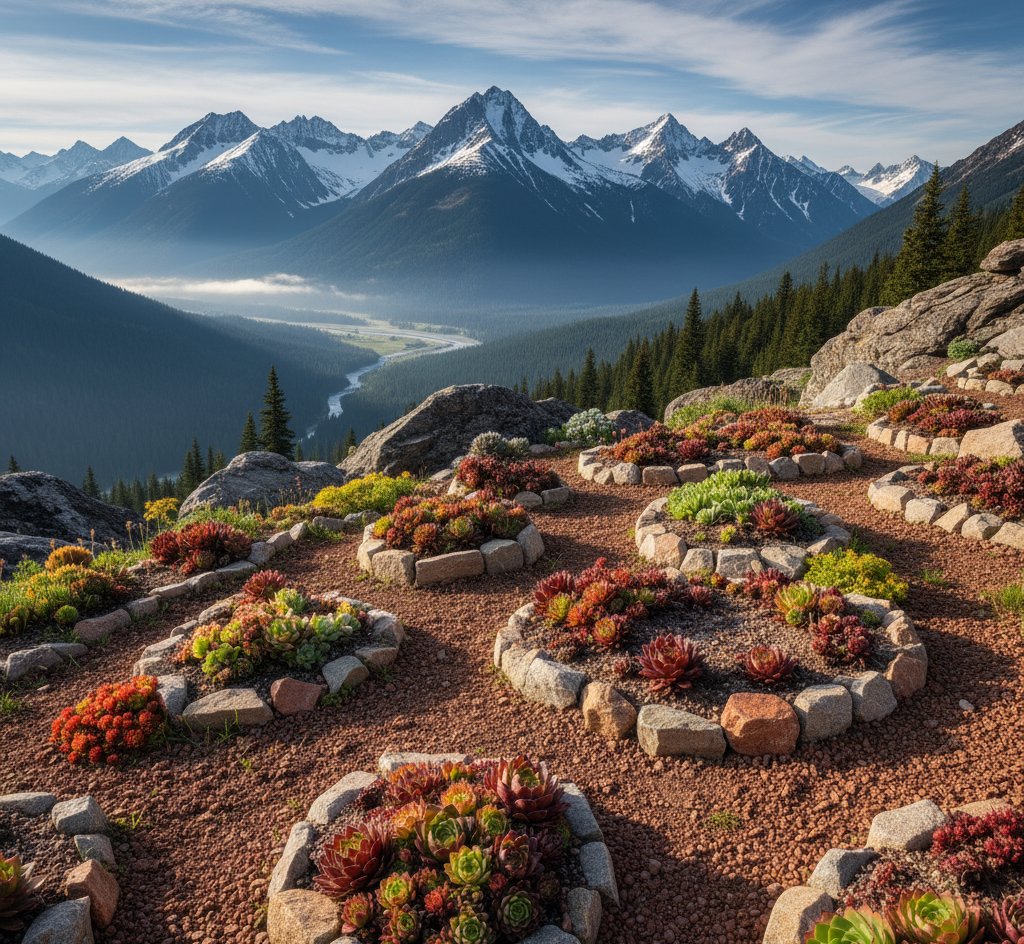Succulents In High Altitude Areas
Growing succulents at high altitudes takes more than sunlight and soil, it takes understanding. Cold nights, intense sun, and thin air create conditions that test even the toughest plants. With the right approach, you can grow healthy, resilient succulents that thrive despite the challenges of elevation.
You’ll learn what makes high-altitude environments different and how those factors affect plant growth. From handling temperature swings to improving soil drainage, small adjustments can make a big difference in success.
Knowing which species can handle the stress of altitude helps you avoid frustration and wasted effort. Once you match the right plants to your conditions, your garden can stay vibrant through the extremes of mountain life.
Key Challenges of Growing Succulents in High Altitude Areas
You face unique growing conditions in high-altitude environments. Cold nights, strong sun, and dry winds test even hardy succulents. Success depends on understanding how these factors affect plant health and adjusting your care routine accordingly.
Temperature Extremes and Short Growing Seasons
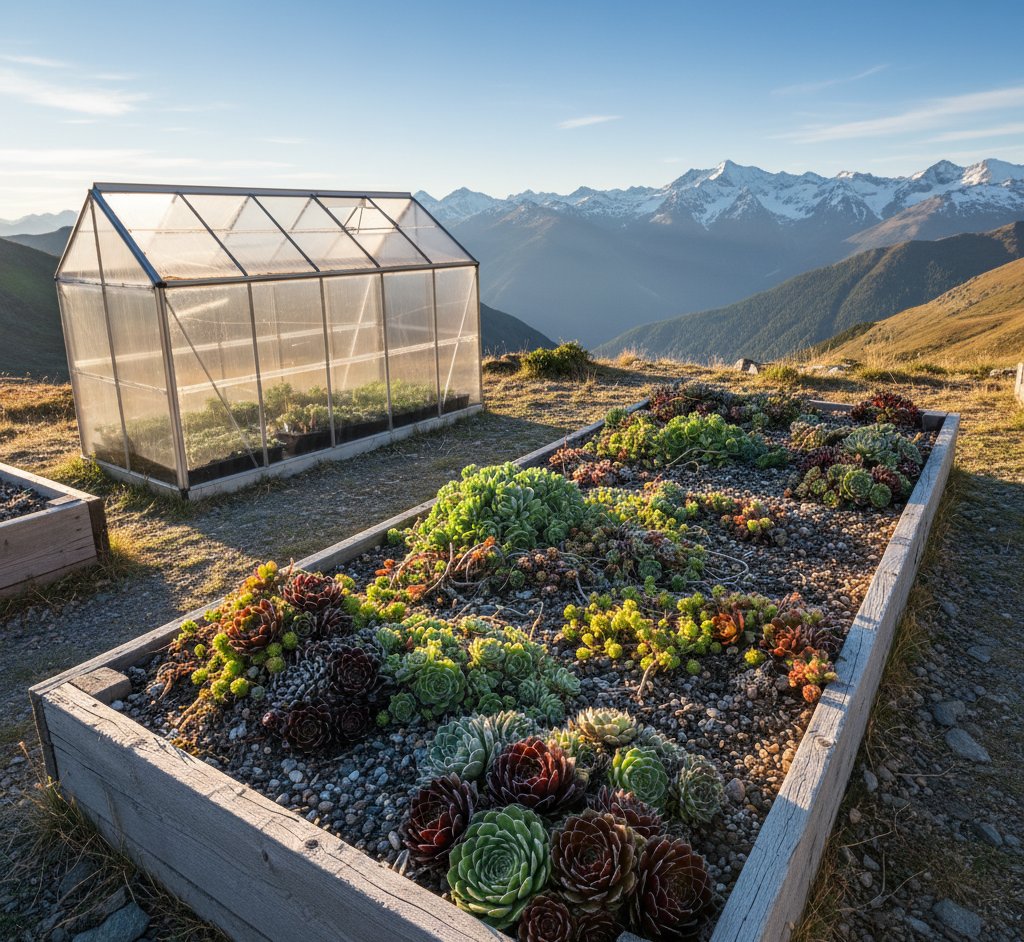
High-altitude areas often have large temperature swings between day and night. Warm afternoons can drop to near freezing after sunset. These changes stress succulents, which prefer stable temperatures.
Cold-tolerant species such as Sempervivum and Sedum handle frost better than tropical types. You should avoid overwatering during cold spells since wet roots freeze easily. Use well-draining soil and raised beds to prevent moisture buildup.
Short growing seasons also limit growth time. Start plants indoors or in a greenhouse before the last frost. This gives them a head start and allows roots to establish before outdoor conditions turn harsh.
A simple seasonal care schedule helps:
| Season | Key Task | Notes |
|---|---|---|
| Spring | Gradual sun exposure | Prevent sunburn on new growth |
| Summer | Regular watering | Only when soil is dry |
| Fall | Reduce watering | Prepare for dormancy |
| Winter | Protect from frost | Use covers or move indoors |
Intense Sunlight and High UV Radiation
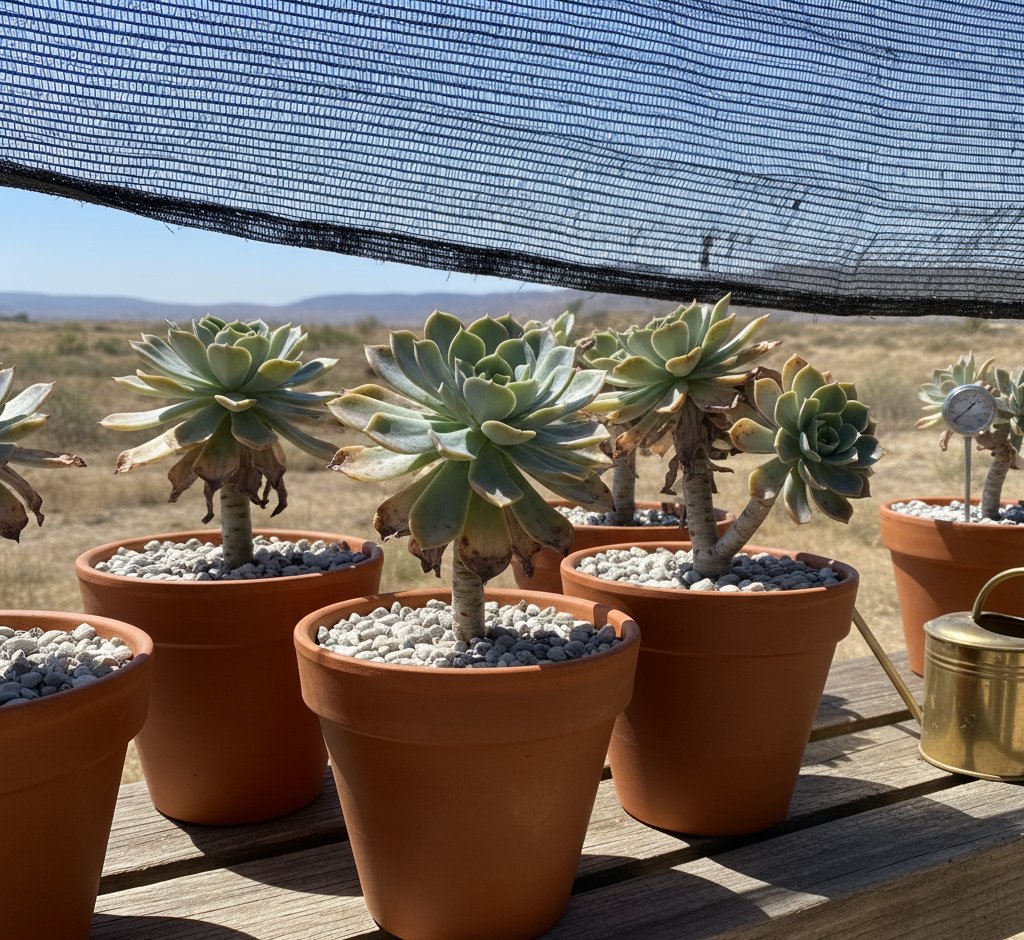
At higher elevations, sunlight is stronger due to thinner air. UV radiation can damage plant tissue, causing scorch marks or faded color. Even sun-loving succulents like Echeveria can burn in direct afternoon light.
Provide filtered sunlight using shade cloth or position plants where they receive morning sun and afternoon shade. Indoors, place them near bright windows but avoid glass that magnifies heat.
High UV levels can also dry soil faster. Check moisture more often, especially for potted plants. A top dressing of gravel helps protect roots and maintain even soil temperature.
If leaves appear bleached or crispy, move plants to partial shade immediately. They may recover new growth once stress decreases.
Wind Exposure and Moisture Loss
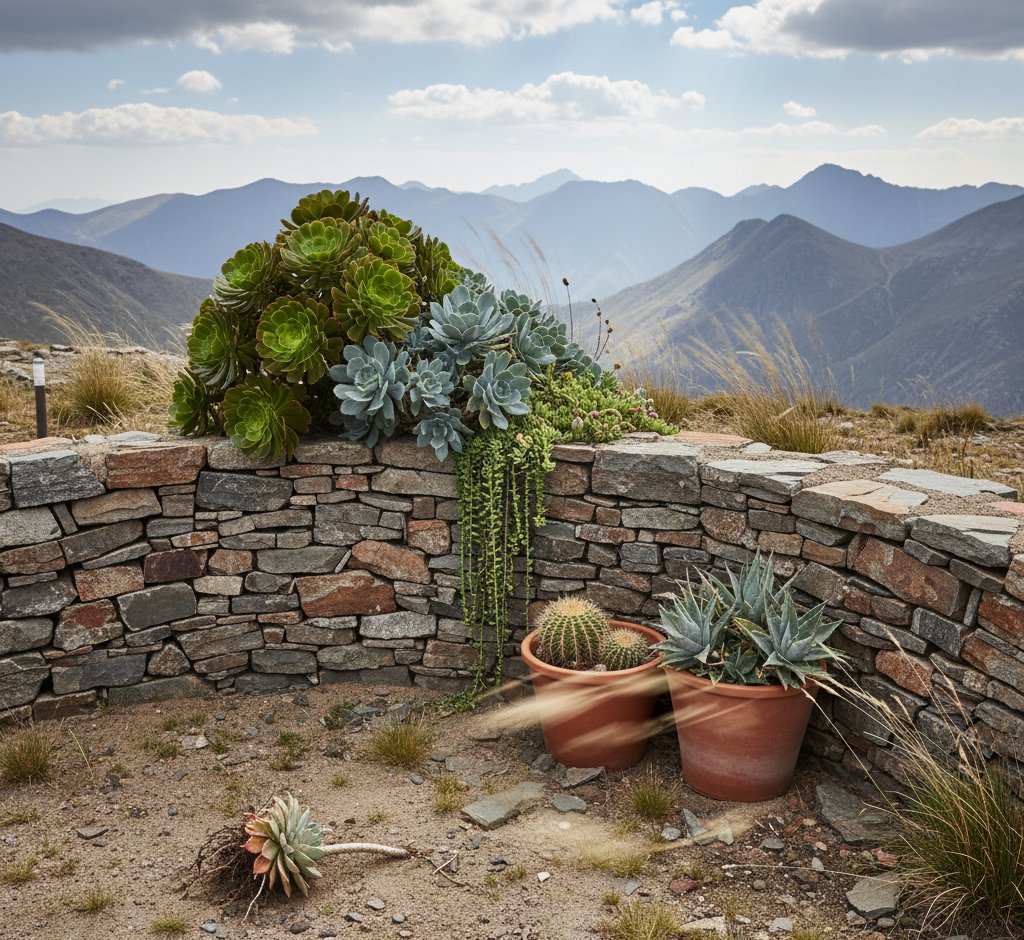
Mountain winds remove moisture from leaves and soil quickly. Succulents lose minimal water through their leaf surfaces due to adaptations, but persistent wind can still lead to desiccation, break stems, or uproot shallow-rooted plants.
Use windbreaks such as rock walls, fences, or dense shrubs to reduce airflow. Grouping plants together creates a small microclimate that retains humidity and warmth.
If you grow succulents in containers, choose heavy pots to prevent tipping. Place them in sheltered spots near walls or patios where wind is less direct.
Selecting Suitable Succulent Species for High Elevations
You need plants that can handle cold nights, intense sunlight, and quick temperature changes. Focus on hardy succulents, reliable companion plants, and native species adapted to mountain conditions to build a resilient garden.
Cold-Hardy Succulents
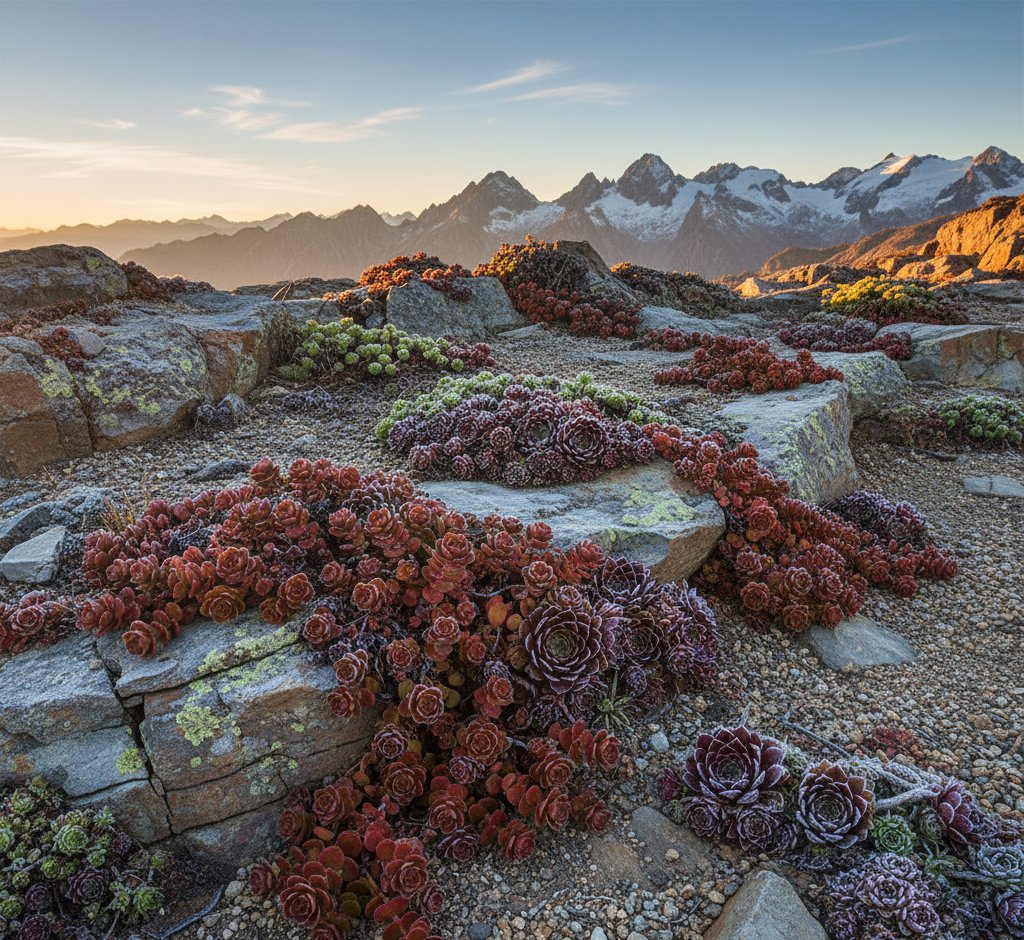
At high elevations, temperatures drop sharply after sunset. Choose cold-hardy succulents that tolerate frost and short growing seasons. Sedum and Sempervivum are two of the most dependable options. They survive snow cover and return each spring with minimal care.
Use a gritty, fast-draining soil mix to prevent root rot. Raised beds or rock gardens improve drainage and keep roots dry. Avoid tropical species like Aloe vera, which prefer warmer climates and may not recover after freezing.
Recommended Perennials and Companion Plants
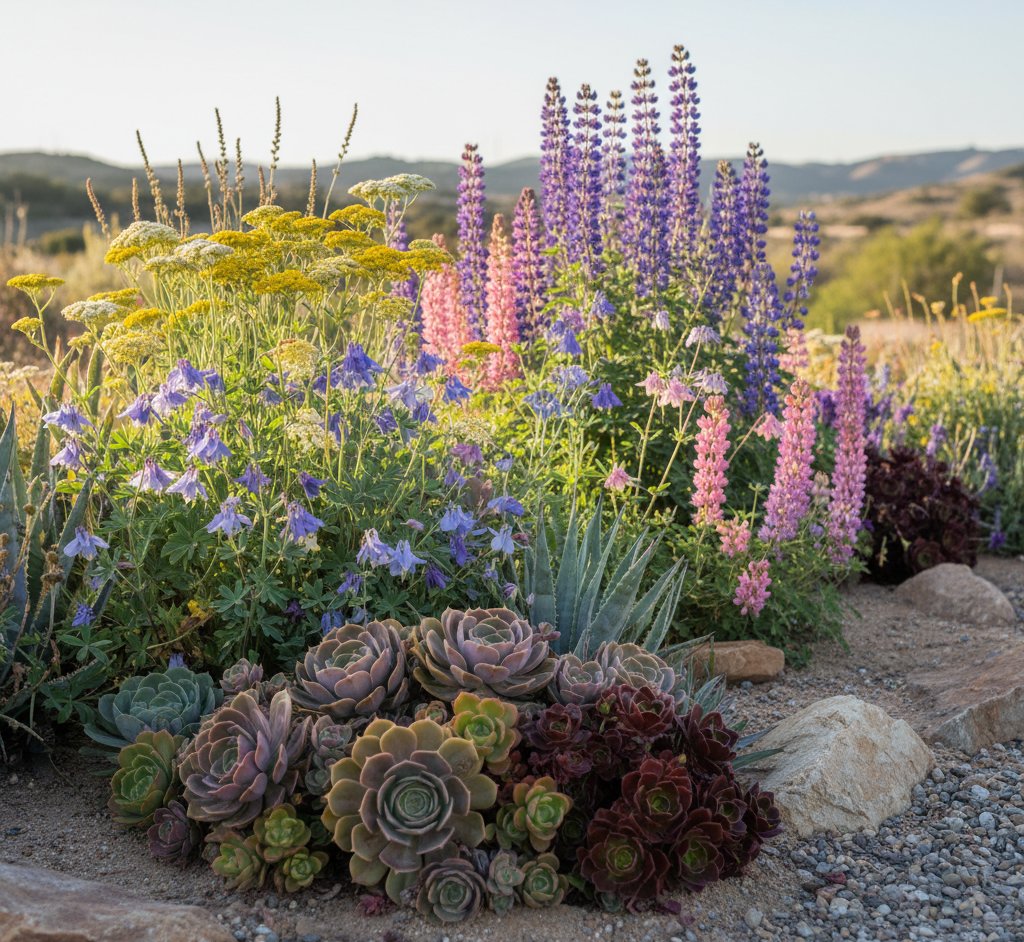
Succulents thrive when paired with low-maintenance perennials that share similar water and soil needs. Plants such as yarrow (Achillea), columbine (Aquilegia), and lupine (Lupinus) add color while tolerating cold, dry conditions.
Use a simple layout like this to plan combinations:
| Succulent | Companion Plant | Benefit |
|---|---|---|
| Sedum acre | Yarrow | Improves ground cover and erosion control |
| Sempervivum tectorum | Columbine | Adds seasonal color and pollinator support |
| Delosperma cooperi | Lupine | Enhances soil nitrogen and visual contrast |
Include bleeding heart (Dicentra) or delphinium in shaded areas where succulents are less dense. These plants handle cooler soils and extend the bloom season. Avoid overwatering companions, as excess moisture harms succulent roots.
Native Succulents and Their Origins
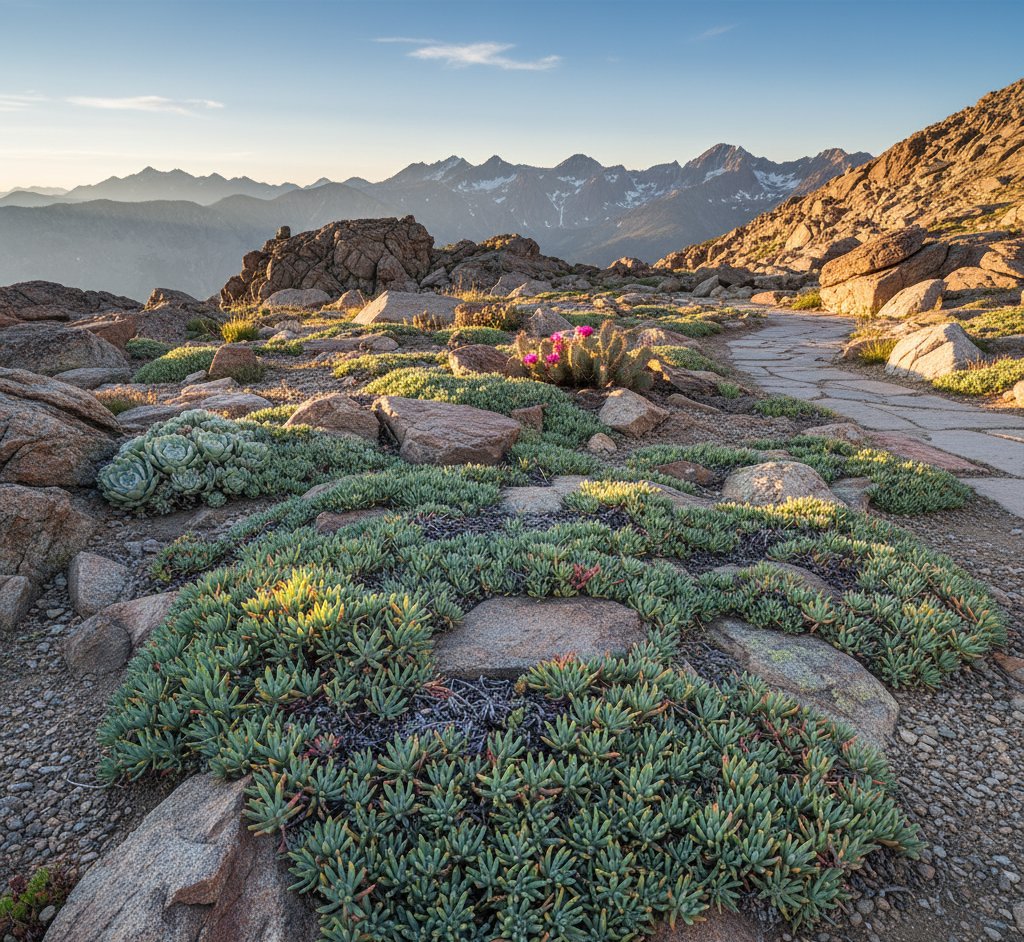
Selecting native or regionally adapted succulents increases survival rates. Species from the Rocky Mountains, Sierra Nevada, and northern Mexico evolved in thin, rocky soils with limited rainfall. They naturally manage cold nights and intense sunlight.
Sedum lanceolatum, native to western North America, grows well in alpine rock gardens. It forms dense mats that protect the soil from erosion.
When possible, buy from local nurseries that specialize in alpine or mountain plants. These nurseries often carry regional cultivars already adjusted to your elevation. Native selections require less fertilizer, fewer pest treatments, and adapt faster to local microclimates.

